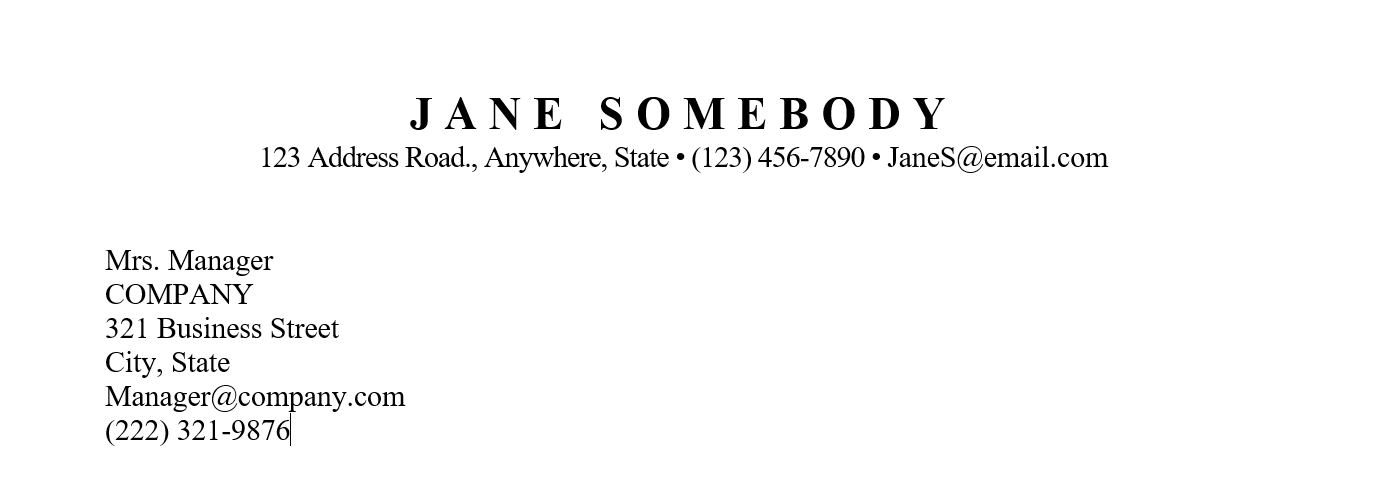Despite what some may say, cover letters remain an important part of the job application process. While resumes may provide a summary of skills and timeline of work experience, the cover letter allows an applicant to demonstrate his or her personality, written communications skills, and interest in the job.
But knowing how to professionally organize the contents of your cover letter can be just as important as the contents themselves. Here are some general formatting tips and rules to remember as you put together your next cover letter.
1. The Header
Before you start getting into the meat of your writing, a cover letter should include your contact information at the very top. And right beneath that, you should include the recipient’s contact information.
Something like this:

2. The Greeting
Greet the person to whom you are addressing your cover letter in a professional, yet simple way. A generic salutation like “Dear Mrs. Manager” or “Mr. Supervisor” are more than sufficient.
If you do not know who the hiring manager is, do a little digging so you are not left addressing your cover letter “To Whom It May Concern”.
3. The Body Paragraphs
Once you have put together your heading and greeting, it is time to start drafting the substance of your cover letter. As a general rule, cover letters should only be a few paragraphs long and fit within a single page.
Here is how you should break the paragraphs up:
- First Paragraph: This should serve as an introduction. Here you can briefly introduce yourself and which position you are applying for.
- Middle Paragraphs: These paragraphs are where you describe your relevant work experience, any gaps in your resume, and perhaps why you have an interest in working for the company.
- Concluding Paragraph: The final paragraph in your cover letter should briefly thank the recipient for their time and consideration, as well as briefly summarize your qualifications and why they fit with the role.
4. The Closing
After your concluding paragraph, close your cover letter with one of the following complimentary closings:
Best
Regards
Respectfully
Sincerely
Thank you
Unless you have a close relationship with the person to whom you are addressing your letter, it is best to avoid casual closings like “Warm Regards” or “Yours Truly”. And finally, if you are submitting a hard copy of your cover letter, handwrite your signature and type your full name right below, like this:

Jane Somebody
5. The Final Formatting Reminders
Proper formatting is more than just organizing the words into a proper layout on the page. You also need to be mindful of fonts, sizing, and spacing.
Regarding font, stick to a timeless, professional font like Times New Roman or Arial. Be mindful if you are mailing or emailing your resume, as some fonts read better on screen than they do offscreen. You should also stick to a font size between 10 and 12. Size 12 is most common, and if you are keeping your cover letter brief, there should not be a reason to reduce the font size to fit everything on a single page.
Finally, regarding spacing, consistency matters most. But in terms of visual appeal, single spaced writing broken out into several paragraphs is probably best.
Are you looking for a new job? See who is hiring at CyberCoders.com.














